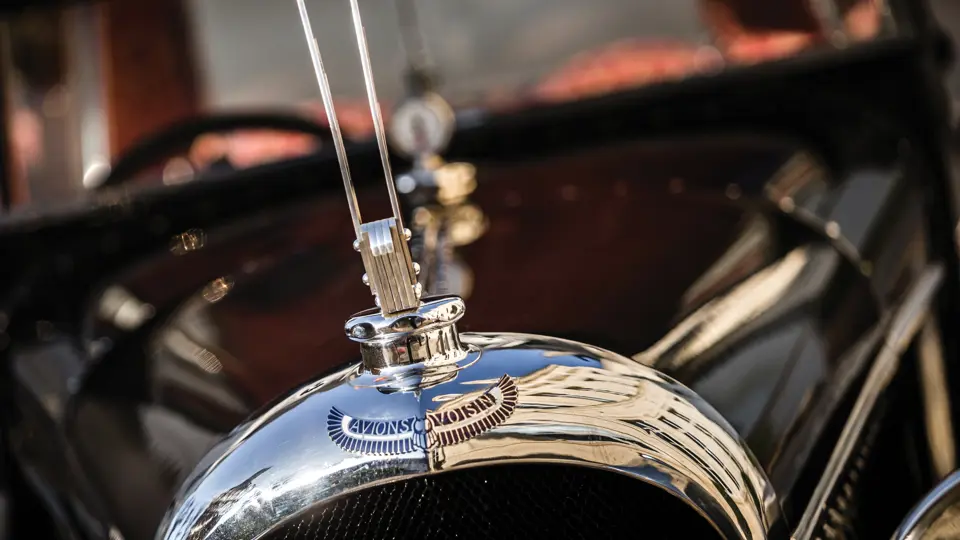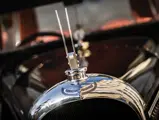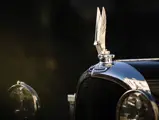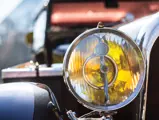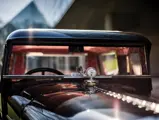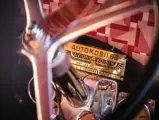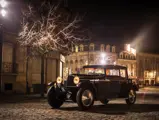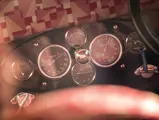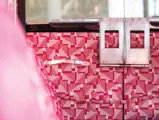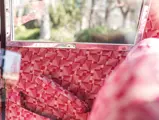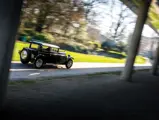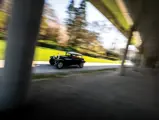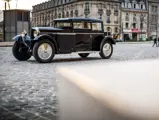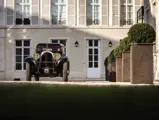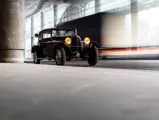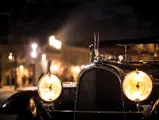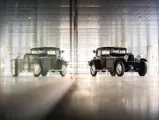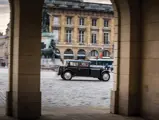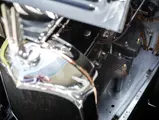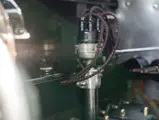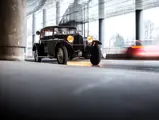
1927 Avions Voisin C14 Lumineuse
{{lr.item.text}}
$800,000 - $950,000 USD | Not Sold
{{bidding.lot.reserveStatusFormatted}}
- Offered from the collection of a marque expert
- The iconic masterpiece design of a renowned engineer
- Quality restoration with original bodywork and engine
- Recently uncovered history, documented by Pierre-Yves Laugier
- CCCA Full Classic
66 bhp, 2,326 cc sleeve-valve inline six-cylinder engine with single twin-choke Zenith carburetor, three-speed manual transmission with two-speed transfer box, solid front and live rear axles with semi-elliptic leaf-spring suspension, and four-wheel servo-assisted mechanical drum brakes. Wheelbase: 126.8 in.
Gabriel Voisin has been described variously as a mechanic, engineer, architect, aerodynamicist, inventor, and industrialist; he was also an artist, musician, poet, and philosopher. In short, he was remarkable. Born in 1880, he had studied architecture, but after witnessing demonstrations of wireless telegraphy and seeing the fanciful flying machine of inventor Clément Ader, he became transfixed with moving objects and resolved to devote himself to the nascent discipline of aviation.
Voisin built his first aircraft in 1902 and, two years later, joined with his brother, Charles, to open a factory. In 1911, he took the dramatic step of building all-metal airplanes, leading to the production of more than 10,000 airframes during World War I, as well as the manufacture of engines, licensed from Salmson and Hispano-Suiza, to power them. Only when left without aircraft contracts at war’s end did he turn his attention to automobiles.
The first Voisin automobile was designed by a pair of former Panhard engineers, who had tried to sell the design to André Citroën, who declined the offer. As it had Panhard roots, the car was powered by a Knight-type sleeve-valve engine, a type that Voisin made his own because of its attributes of silence and smooth torque, mimicking a steam engine. Subsequent models adopted four-wheel brakes, an advanced three-point engine mounting, and advanced body engineering and design, with outer panels in flat sheets of aluminum. The interior featured mechanical workings that were exposed rather than hidden behind wood or upholstery, emphasizing the beautiful mechanical quality of a Voisin’s engineering—similar to opening the back of a fine watch.
Few Voisin automobiles expressed his advanced genius better than the Lumineuse, or “Light,” so-named for the glassy greenhouse, with its angled windows, that permitted sunshine to illuminate the interior. This had come to be regarded as one of the foremost Voisin designs and is among the most desirable to avid collectors of his work.
CHASSIS NUMBER 28068
According to a report prepared for the current owner, a well-known Avions Voisin historian, C14 Lumineuse number 28068 was first registered on June 17, 1930. Subsequently, the car passed to a new Parisian owner on August 8, 1945, and was subsequently re-registered under the “new” French system on April 20, 1955, under the number 7209 DU 75. Its owner at the time, unfortunately, is not known. However, by 1964, it had made its way to the Garage Weber, with which it was registered on April 22, 1964.
Around 1975, the car was acquired from André Weber’s facility, northeast of Paris near Pontoise, by André Colas, near Bar-le-Duc. According to Pierre Laugier, the body was complete and in good condition, with the interior in original blue/grey fabric; a new engine, number 26758, had been installed, replacing the original, and the car was in good enough mechanical condition to make a few trips around the village, verifying it worked correctly. By 1980, it had been acquired by its next enthusiast owner, Gino Terzulli. Soon the car passed to the Bec Hellouin Automobile Museum, owned by Christian Chassaing of Borredon, for whom its coachwork was restored by the renowned facility of Lecoq.
Subsequently, the museum’s collection was sold in 1991, with the car being acquired by its present owner. It was reconditioned to make it a reliable road vehicle by Voisin mechanical specialist Jean-Pierre Becret, including rebuilding of the engine the following year with new connecting rods. The owner noted that, at the time, the original chassis number plate, number 28068, was not in the vehicle; a new plate was subsequently made, carrying the same number. The front axle carries a brass plate, secured by studs on the left interior face, bearing the original number 28068. The bodywork retains its original panels, as verified by Laugier, who notes that the bonnet is also numbered 28068, confirming the originality of the body. The interior was redone more recently, in red fabric of a Voisin-type pattern common to the fascinating Paul Poiret-inspired Art Deco materials originally used in these automobiles, while the body was finished in a stunning all-black livery.
In 2000, the current owner had the opportunity to buy the car’s original engine, number 28152, from former owner Mr. Terzulli; it was subsequently rebuilt and is currently installed in the car, returning it to its original configuration as it was delivered in 1930. Inspection of the engine shows that it retains the stamped 28152 on the upper side of the crankshaft, as well as a small brass plate labeled “M 11 Type Series No. 28152” nearby.
One of the few known surviving examples of this iconic Voisin design, chassis number 28068 is distinguished by the quality of the workmanship of its restoration, and with recent inspection by Pierre-Yves Laugier confirming the originality of its mechanical components and bodywork, as well as its ownership by a great connoisseur of the marque, it is guaranteed a very special place in the stable of its new owner.

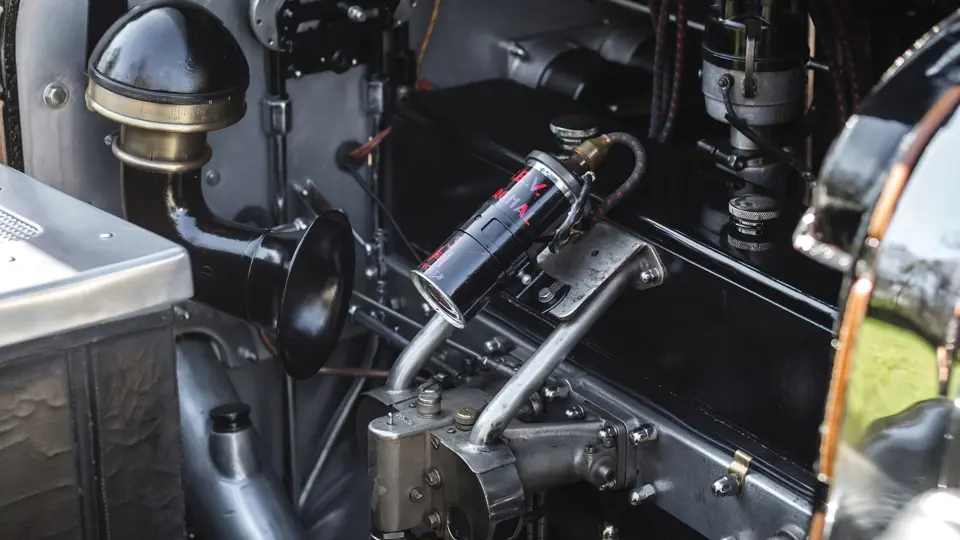


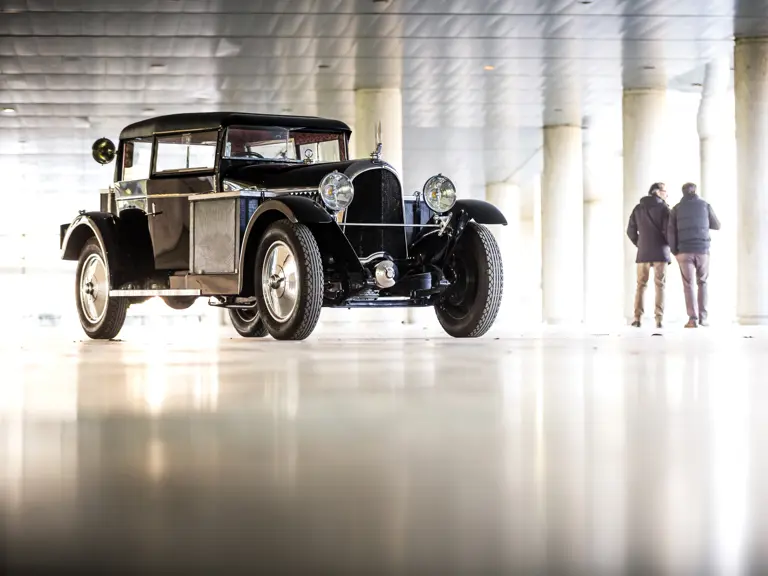
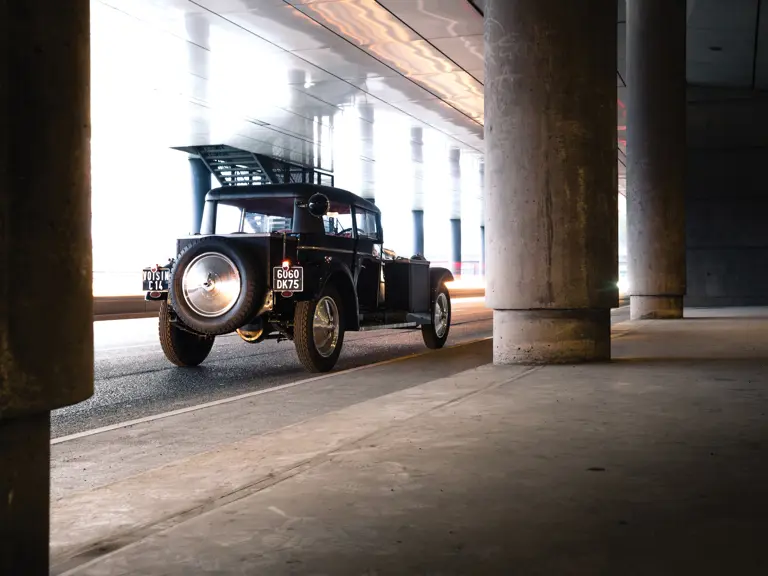
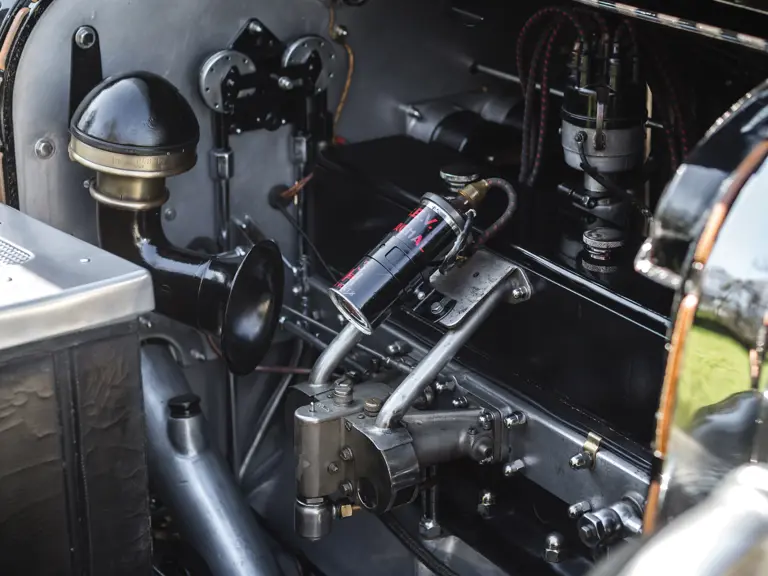
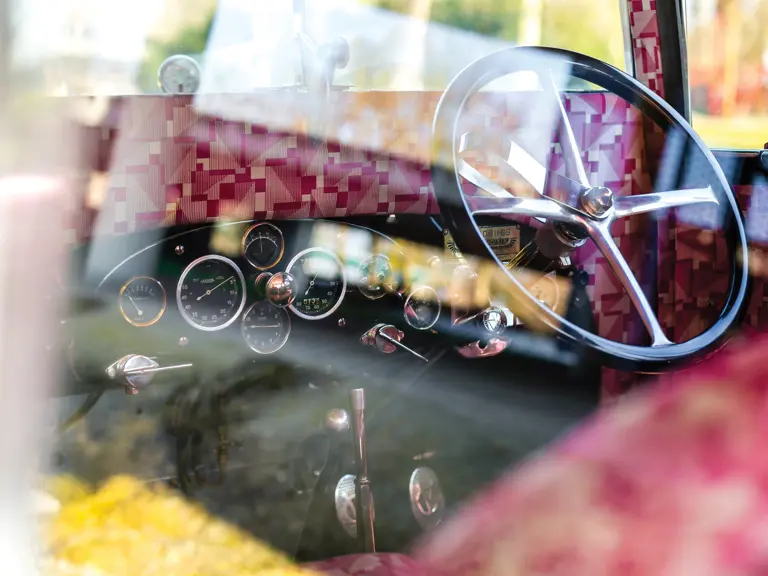
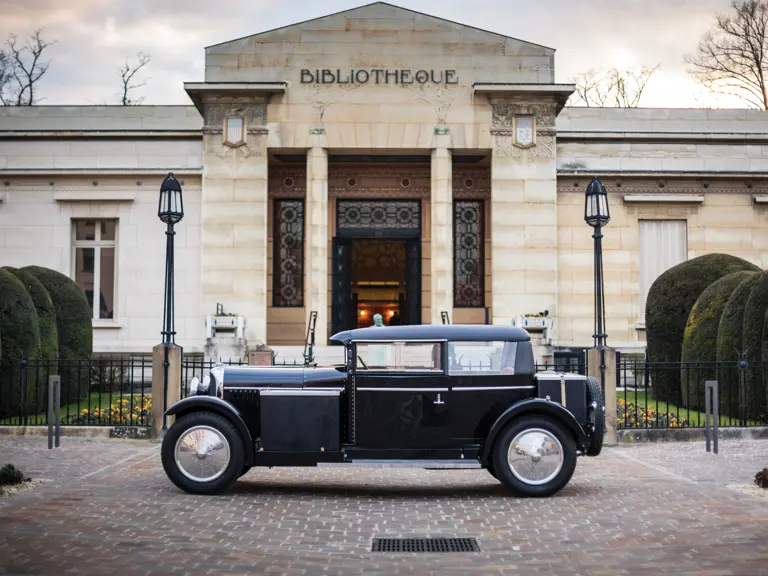
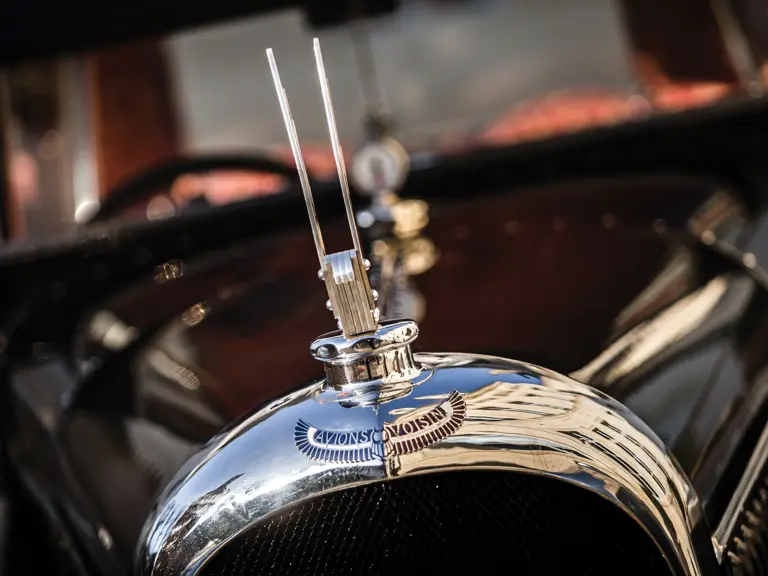

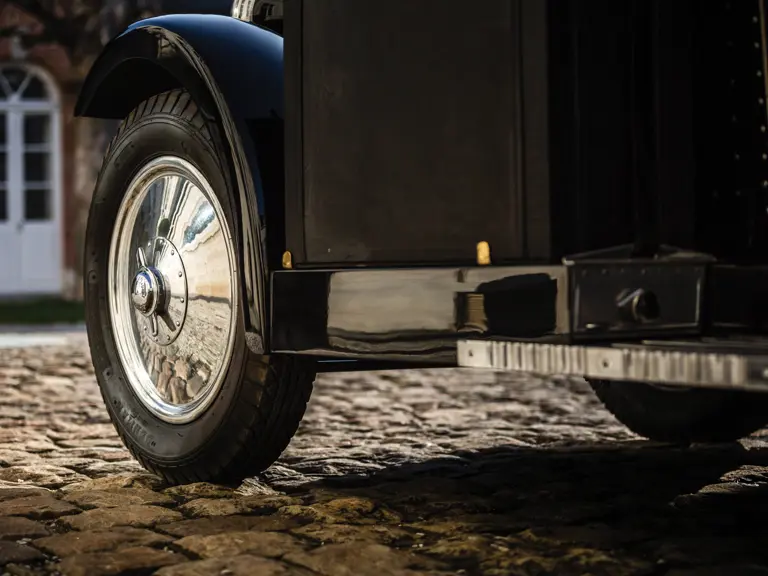

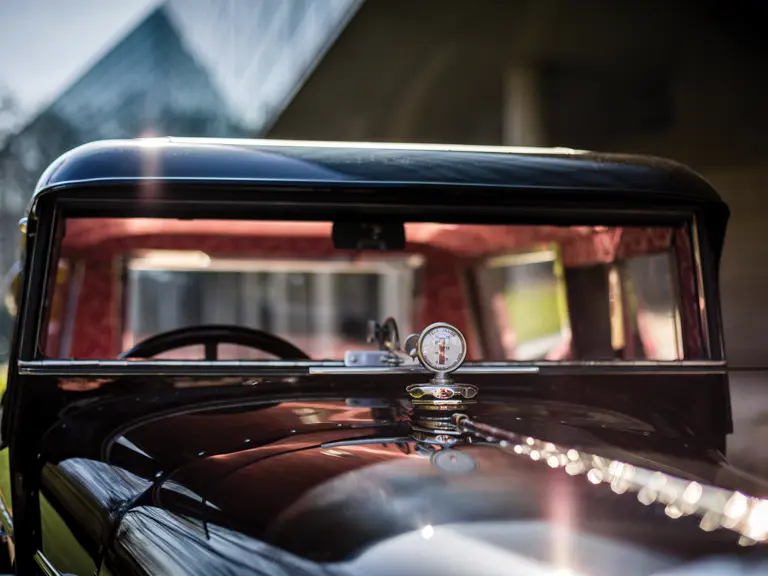
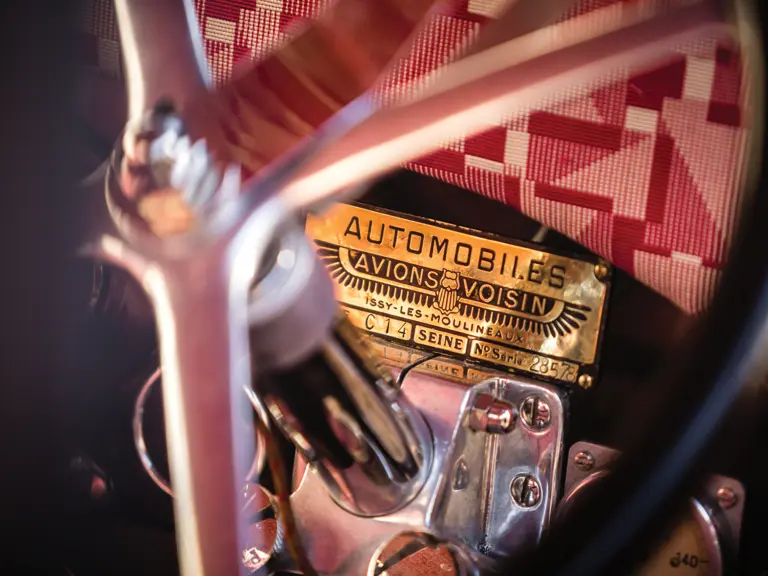
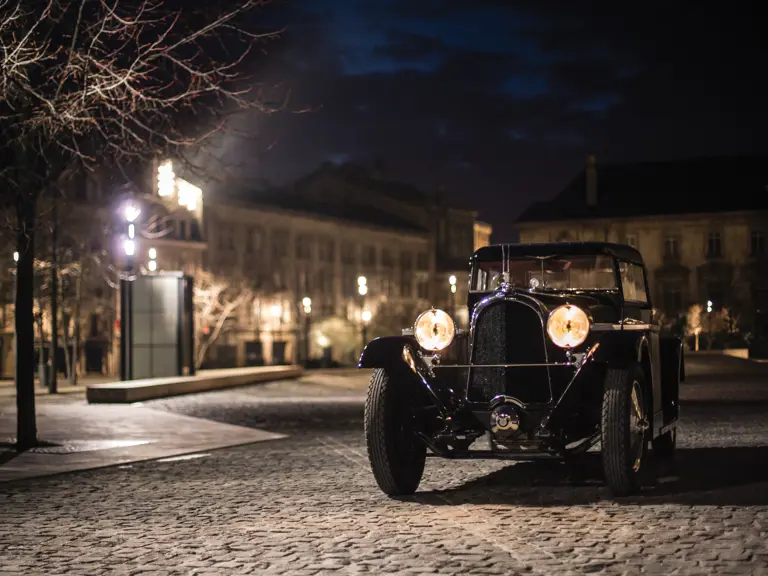


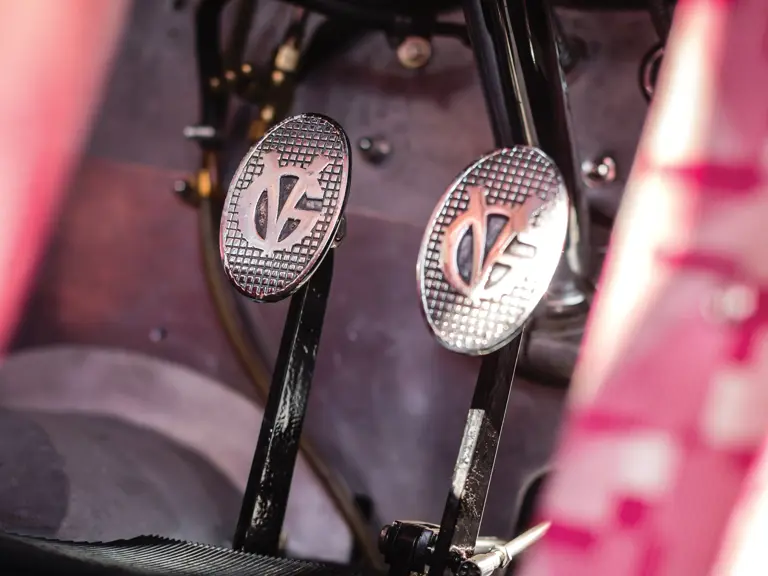
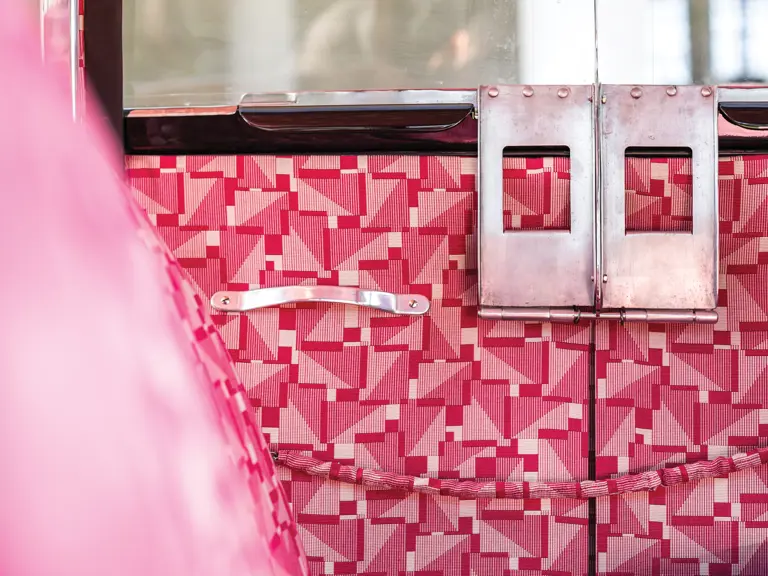
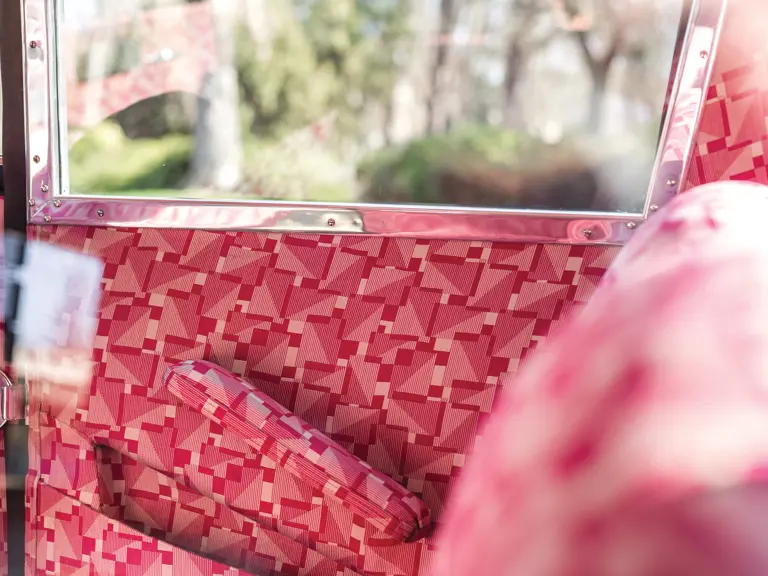

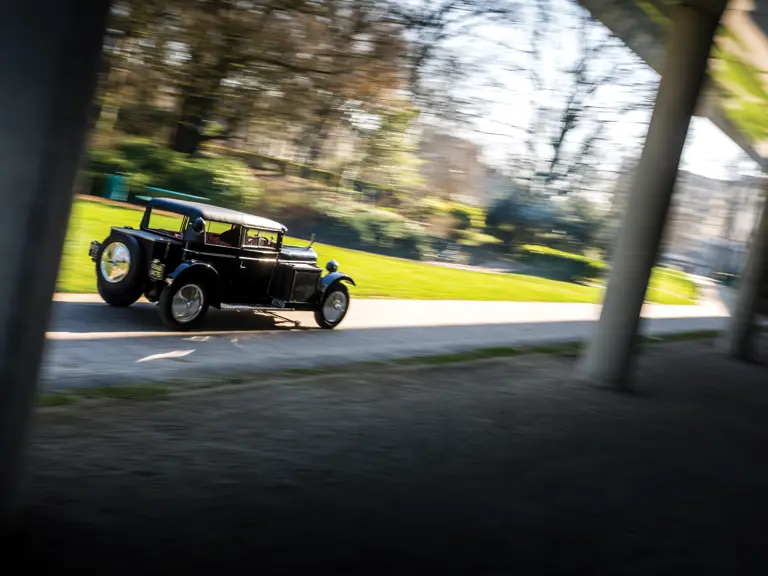
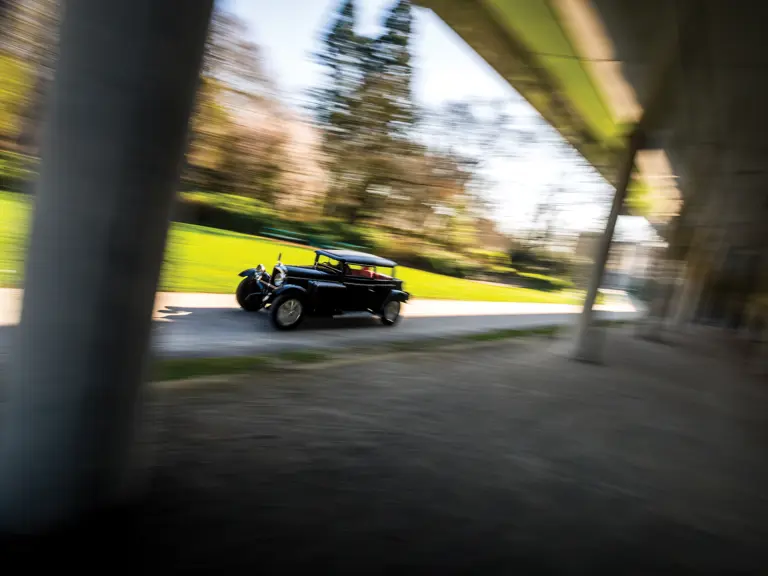
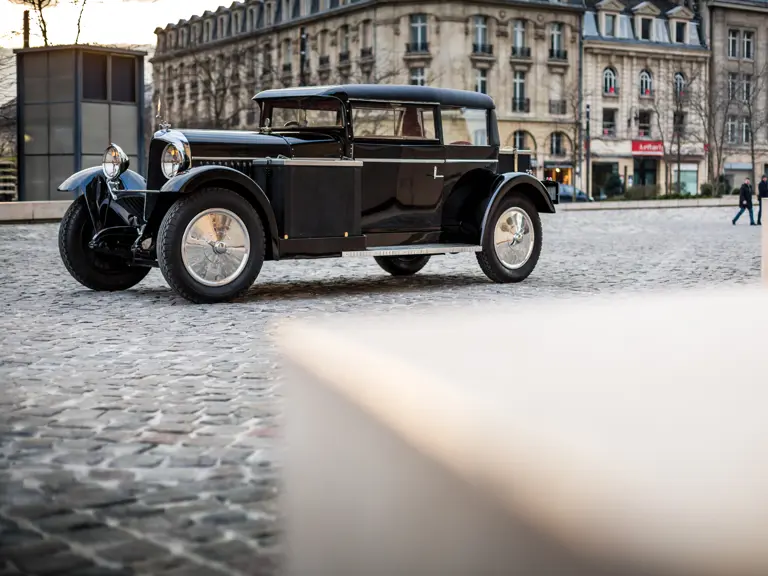

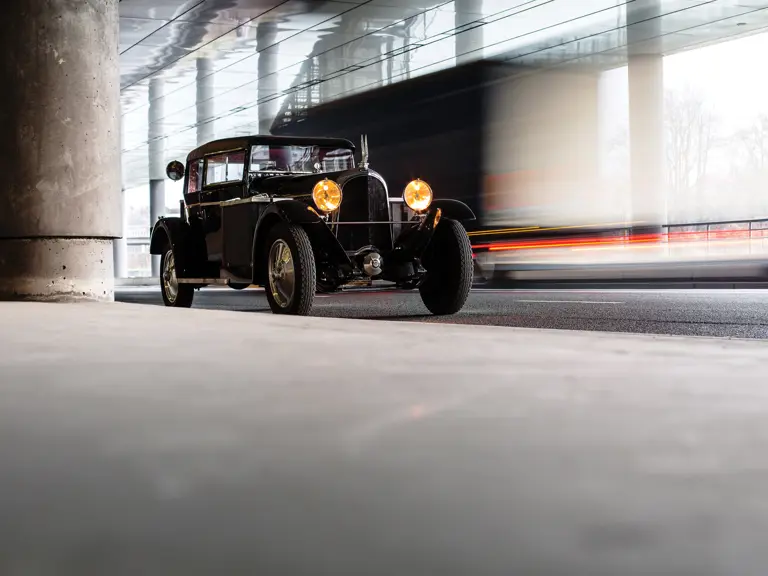

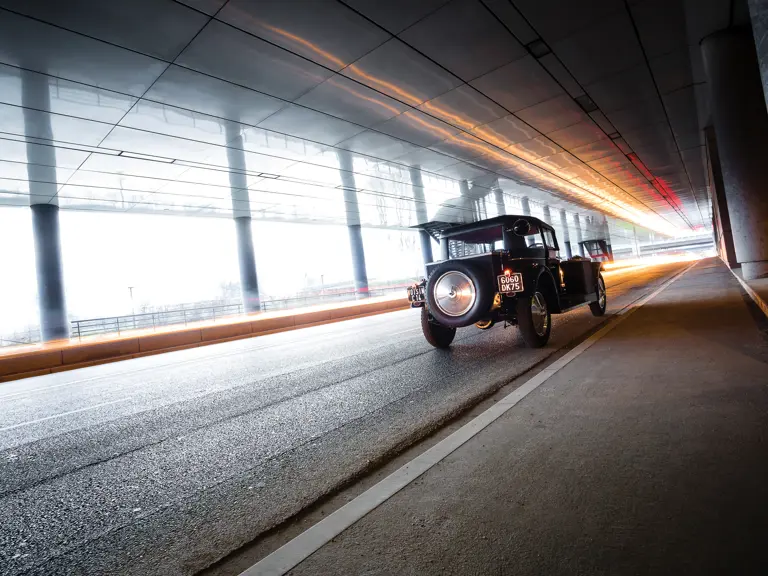

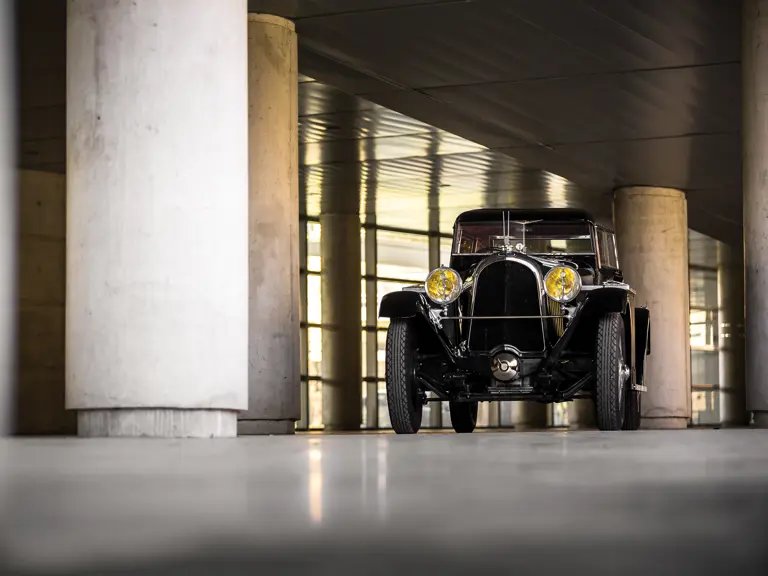
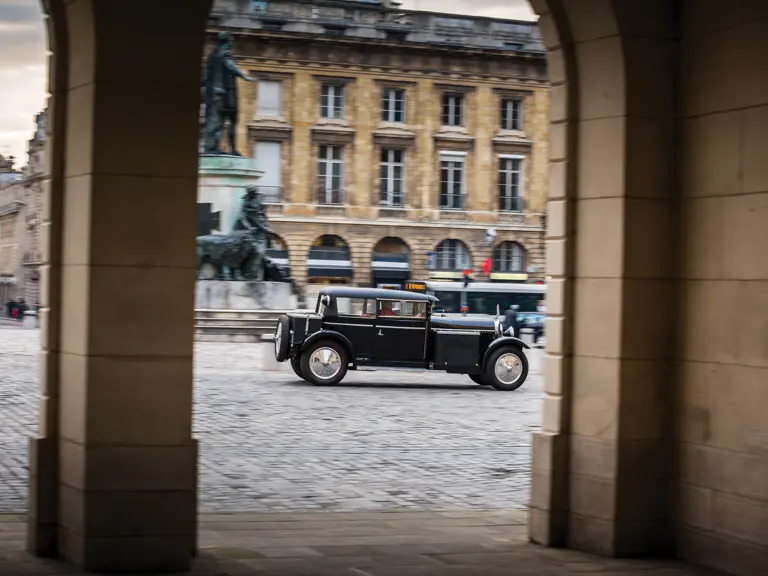
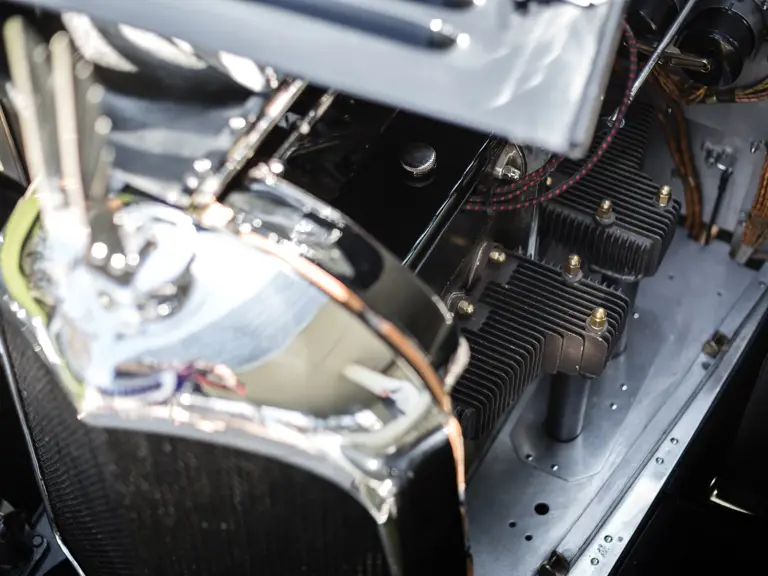



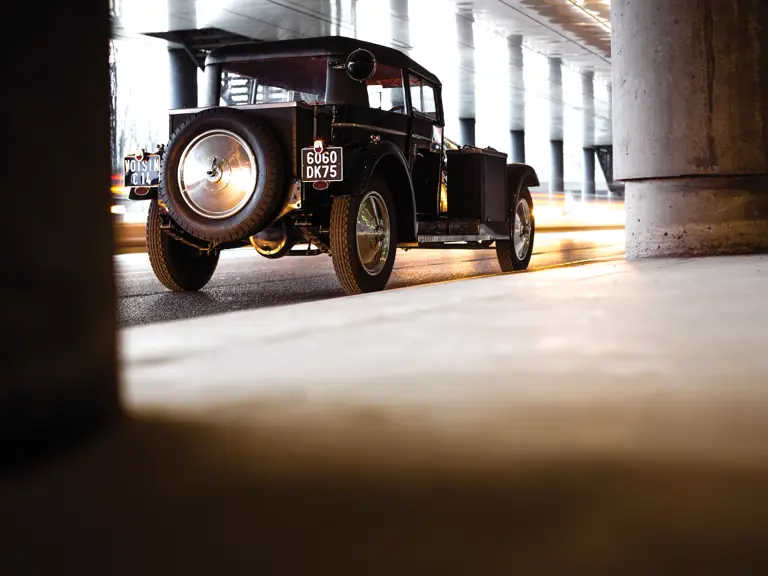
 | Amelia Island, Florida
| Amelia Island, Florida

